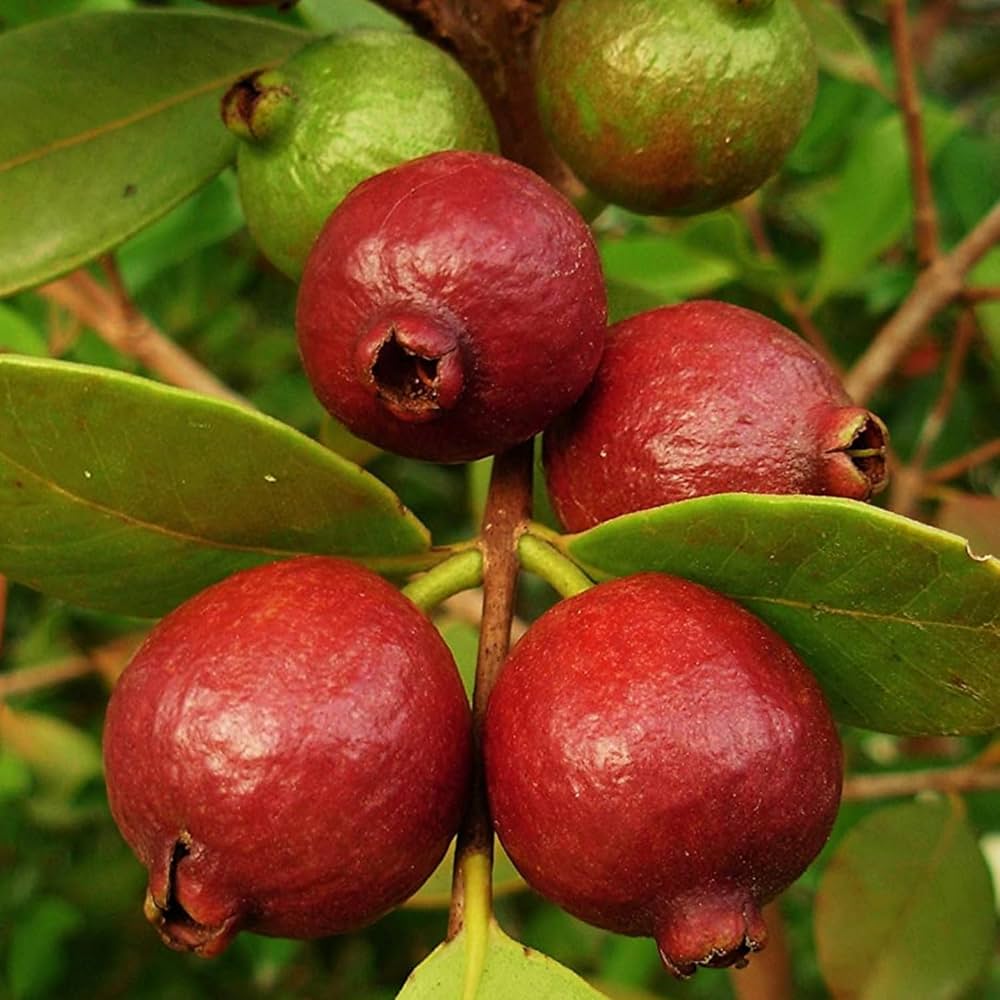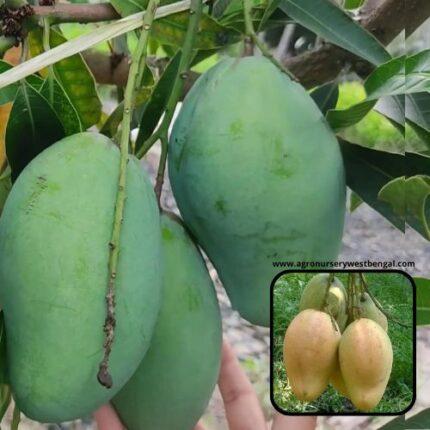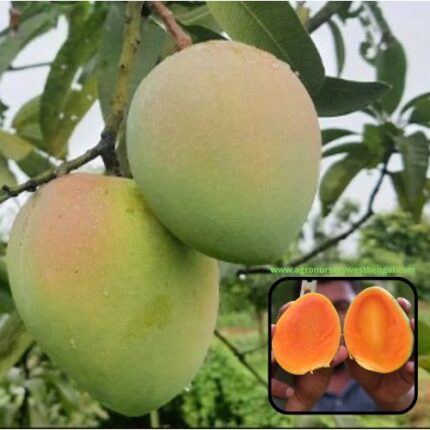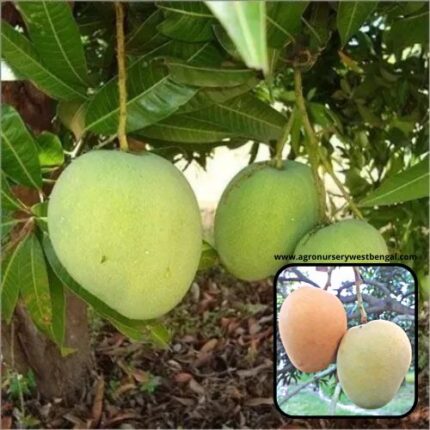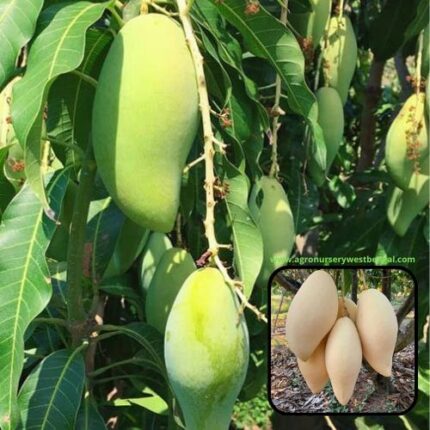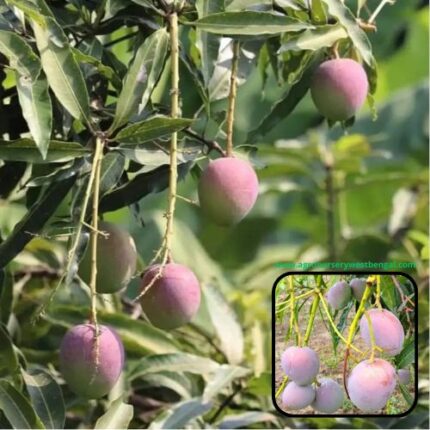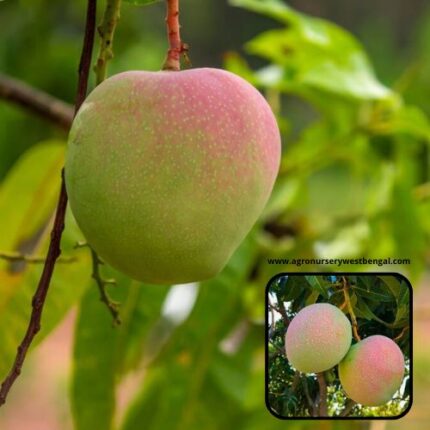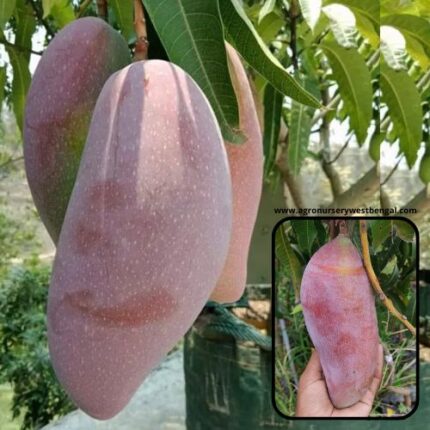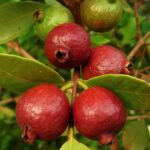
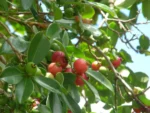
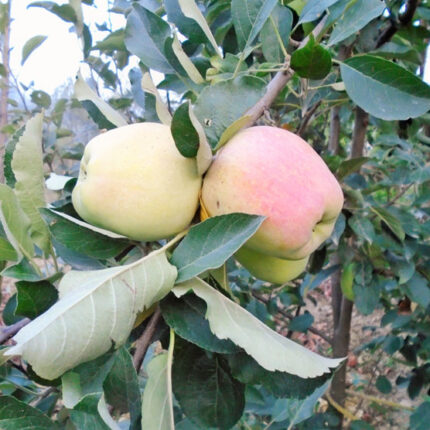

Red strawberry guava fruit plants
₹899 Original price was: ₹899.₹489Current price is: ₹489.
The “Red Strawberry Guava” is a specific variety of guava, botanically known as Psidium cattleyanum (also commonly called Cattley Guava, Cherry Guava, or sometimes confusingly, “Chinese Guava” due to its widespread cultivation in China after being introduced from its native Brazil). It’s distinct from the common guava (Psidium guajava) and is highly valued for its attractive appearance, easy growth, and unique flavor.
Here’s a detailed description of the Red Strawberry Guava:
1. The Fruit:
-
Appearance (Exterior):
- Size & Shape: Small, typically 2 to 4 cm (0.8 to 1.5 inches) in diameter, making them about the size of a cherry or a small plum. They have a round to oval shape.
- Color: Ripens from green to a vibrant pink, dark red, or purplish-red when fully mature. The skin is thin, smooth, and glossy.
-
Appearance (Interior):
- Flesh: The flesh is translucent to white, juicy, and aqueous.
- Seeds: Contains numerous small, hard, and round, tan seeds. While edible, they are tough and often swallowed whole or discarded by some.
-
Aroma: Highly aromatic, often described as having a sweet, fruity, and floral scent reminiscent of roses and strawberries.
-
Taste: This is its defining characteristic. When fully ripe, the taste is a delightful sweet-tart balance. It distinctly combines notes of strawberry and a tangy plum-like flavor, sometimes with subtle spicy hints of cinnamon or nutmeg. The level of tartness can vary between individual fruits and stages of ripeness, with riper fruits being sweeter.
2. The Plant (Psidium cattleyanum):
- Growth Habit: An evergreen shrub or small tree, typically growing 3-8 meters (10-26 feet) tall, though it can reach up to 12 meters in ideal conditions. It tends to have an upright, multi-trunked, and somewhat bushy growth habit.
- Leaves: The leaves are simple, opposite, oblong to obovate, 4-12 cm long, glossy, and dark green on the upper surface. Young leaves and twigs can sometimes have a reddish tint. They are attractive year-round.
- Bark: The bark is smooth and distinctive, often peeling off in thin, papery flakes, revealing various shades of reddish-brown or gray underneath.
- Flowers: Produces small, fluffy, white flowers with many prominent stamens (resembling miniature powder-puffs). They are mildly fragrant and typically bloom year-round in tropical climates, with heavier flushes.
- Hardiness & Adaptability:
- Thrives in warm, tropical, and subtropical climates.
- Relatively hardy and can withstand mild frost once established (down to about -2°C or 28°F), though prolonged freezing temperatures will cause damage.
- Tolerates a wide range of soil types (clay, sand, loam, alkaline, acidic) as long as they are well-drained.
- Prefers full sun but can tolerate partial shade, though fruit production may be reduced.
- Known for its resilience and ability to produce fruit even in less-than-ideal conditions.
- Fruiting Season: In consistently warm tropical regions, it can fruit year-round or produce multiple crops. In subtropical areas, fruits are typically available in summer and early fall.
3. Uses and Benefits:
- Fresh Consumption: Red Strawberry Guava is primarily eaten fresh, often straight from the tree. The skin and flesh are entirely edible.
- Culinary Uses: Its unique sweet-tart flavor makes it excellent for:
- Jams, jellies, and preserves
- Juices and smoothies (seeds are often strained out for these)
- Syrups for flavoring beverages and desserts
- Sauces and purees
- Fruit salads
- Desserts like ice cream or tarts
- Ornamental Value: Due to its attractive glossy foliage, peeling bark, and abundant, bright red fruits, it’s widely used as an ornamental shrub or small tree in landscaping, hedges, or container planting.
- Nutritional Value: A healthy fruit, rich in:
- Vitamin C: A potent antioxidant that boosts the immune system.
- Vitamin A (beta-carotene): Important for vision and skin health.
- Dietary Fiber: Aids in digestion and promotes gut health.
- Antioxidants: Contains various beneficial compounds that combat oxidative stress.
- Minerals: Provides potassium, magnesium, and some omega-3 and omega-6 fatty acids (from the seeds).
- Ecological Impact (Important Note): While a beloved fruit, the Red Strawberry Guava is considered an invasive species in some tropical and subtropical regions outside of its native Brazil (e.g., Hawaii, Florida, some Pacific Islands). Its rapid growth, prolific seeding (often spread by birds and animals), and ability to form dense thickets can outcompete native vegetation and alter ecosystems. Therefore, it’s crucial to be aware of its invasive potential in your specific region before planting.
In summary, the Red Strawberry Guava is a charming and delicious fruit, offering a unique sweet-tart flavor profile and a beautiful appearance, making it a favorite for both consumption and ornamental purposes in suitable climates.

